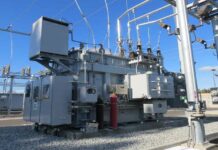Most construction fleet managers know the importance of maintaining their heavy equipment to reduce downtime and ensure excellent performance. However, they may not immediately grasp why fluid analysis should be a part of those efforts. Incorporating it gives people more visibility into their machinery’s health, allowing them to take proactive measures when necessary.
Fluid Analyses Are Straightforward and Essential
When technicians perform fluid analyses, they take samples of construction equipment’s used fuel, lubricants and coolants while the machines are running. These are extracted from circulation points in the system, so people usually draw them from specifically located ports.
They begin by taking two examples of a machine’s fluid. The first is the cleanout sample. As the name suggests, it minimizes contamination within the second sample. Although people can only take a small amount when obtaining the cleanout sample, they will send the next one to a laboratory and should fill the container.
Before shipping the fluids to a lab, technicians should mark the tubes with the machine’s serial number and the number of service hours at the time the sample was obtained. That identifying information will help laboratory workers stay organized when reporting the results.
These fluid checks are quick and easy, and they are essential for keeping equipment performing well for as long as possible. If a lab finds high levels of contaminants in a hydraulic fluid analysis, it could damage components and shorten the equipment’s life. That’s an example of how prevention is far preferable to reacting once it’s too late to effectively address the problem.
What Can a Fluid Analysis Show?
Fluid analyses are important parts of heavy equipment maintenance because they reveal things that may not otherwise be obvious to those using or servicing construction equipment. Similar to the routine blood tests a doctor may order for someone during an annual physical, fluid analyses can show abnormalities that need further investigation.
For example, an oil analysis can indicate:
- How the lubricant properties change during use.
- Whether lubricant degradation has occurred.
- The type and severity of degradation if present.
- The sources and extent of contamination.
- The oil’s remaining usefulness.
The results can show equipment technicians there are issues to locate. Perhaps the oil sample showed contamination or premature degradation. If so, internal leaks or engine damage could be the culprit.
The examined factors differ depending on the fluid extracted. If someone samples a machine’s coolant, laboratory workers check the following:
- Refractive index
- pH level
- Conductivity
- Appearance
Their findings tell machine owners whether they have selected the appropriate coolants for their equipment and if they contain the best additives based on usage behaviors. Since the test shows the amount of water in the system, it can also determine if the additive provides the necessary liner protection. Specific issues found during coolant examinations could also indicate potential problems with the machine’s system.
Reaping the Benefits of Fluid Analyses
People often mention how they cannot tackle issues until they know about them. Increased visibility is one of the most compelling reasons for conducting fluid analyses on the recommended schedule. Fleet managers invest significant amounts of money and time into their construction equipment. However, unaddressed problems could reduce productivity, make the machines harder to sell or even ruin them.
Bringing Fluids Directly to Construction Sites
One heavy construction contractor who understands the importance of using the correct fluids with his equipment knew it was time to modernize operations. Once the company’s fleet reached 75 items, keeping them lubed and fueled became challenging.
The contractor updated his methods by purchasing a Class 7 fuel and lube truck. That investment meant one person could maintain the entire fleet by driving the vehicle straight to the construction sites that contained the equipment. It can hold 1,000 gallons of diesel and five fluids, allowing the driver to make fewer trips to the shop for replenishment.
The truck also uses compressed air to create vacuum pressure and extract up to 8 gallons of hot oil per minute. That system is more efficient than traditional pump-based methods and keeps technicians more productive. Changing a machine’s fluid is an important part of heavy equipment service, and this specialized truck makes it easier. However, conducting an analysis is a crucial first step that tells service personnel what to do and when.
Streamlining Equipment Analysis
Fluid analysis allows people to check the effectiveness of components such as filtration systems and spot problems before they cause downtime and impact project schedules. Unaddressed issues can quickly impact a project’s budget by requiring people to pay for unexpected spare parts, urgent technician visits and rented machinery to replace equipment that is temporarily out of service.
Most equipment manufacturers emphasize the importance of ongoing maintenance and warn that shortcomings could reduce a machine’s useful life or performance. However, some make it much easier for construction fleet specialists to stay on top of fluid conditions and all other aspects of keeping equipment running well.
One mobile platform offers Cat fluid analysis results for machines under that manufacturer’s umbrella. It also monitors overall machine health and fault codes, giving fleet managers information they can use to plan inspections, service calls or equipment replacements. Authorized parties can also set up the tool to alert them when specific assets need immediate servicing. Additionally, a convenient dashboard allows people to group machines by project or location, helping them develop efficient and effective maintenance practices.
Prioritizing Sustainability While Operating Equipment
Well-maintained equipment contributes to better sustainability since hidden issues could cause machines to emit more environmental pollutants. Operator training is important for meeting this goal since unnecessary idle time also causes emissions.
Fluid analysis is another — though often overlooked — way to improve sustainability. One lab has met demand by processing up to 240,000 samples per year. The technicians can provide most reports within one business day, and they upload the data to an online portal for easy customer viewing.
Since fluid analyses can reveal whether a liquid has useful life remaining, this data provides a sustainability benefit by ensuring people maximize the value of their chosen fluids and do not change them too soon. Conversely, the outcomes may reveal that they are using the wrong fluids for their machinery, resulting in preventable waste.
Analyzing Fluids Supports Construction Equipment Performance
Successful construction projects require people to stay within stated budgets and timelines. Equipment failures disrupt both goals. Fortunately, fluid analysis results can make people aware of problems before downtime happens, giving them time to take the necessary steps to keep their machines running well. Relatedly, the outcomes help them detect problems early so they can act before those issues cause permanent damage and shorten an asset’s life.




























